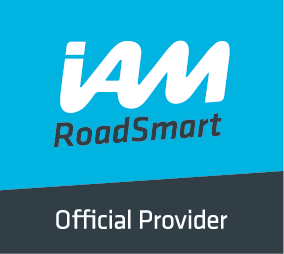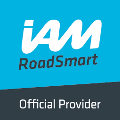Born to run...walk, drive, cycle and ride
This week’s tips, from the IAM’s director of standards, Mark Lewis, are offering advice to drivers about sharing the road safely with vulnerable road users. Here’s how you can better prepare yourself for driving around pedestrians, motorcyclists, cyclists and mobility scooter users
- 1. When driving in busy town centres be aware there may be little or no pavement in some areas, you need to consider your position when in this situation. Give those who have restricted mobility the extra time and space they need to use the road. 2. Keep your eyes peeled when driving near schools. Children can be hard to see, especially during darker hours of the day. Expect the unexpected – be patient when directed to stop by a school crossing patrol or pedestrian crossing. Whatever you do, never wave a pedestrian across the road; you could put them in danger. 3. Always think about where you park your vehicle; is it in a safe and legal place? You should also make sure it is not obstructing a dropped kerb and does not restrict the view of a vulnerable road user – try to avoid parking within 10 metres of a junction and in residential areas at night. Try to park so your vehicle is facing the same direction as the flow of traffic. 4. In heavy traffic, cyclists may filter on either side of you – check your mirrors and blind spots before you change position or change speed. Allow more room when passing cyclists and anticipate the sudden movement of cyclists trying to avoid drains or uneven road surfaces. Avoid following them too closely and give cyclists enough time to move off safely at junctions and traffic lights as they won’t move away as fast as you. 5. Motorcyclists are harder to spot at junctions. Be prepared to slow down as you approach a junction, give motorcyclists extra space and don’t forget to check you mirrors and blind spots. 6. Mobility scooters are most vulnerable at road junctions and roundabouts. Remember, these road users may have restricted movement, vision or hearing – give these vulnerable road users plenty of space on the road. With a top speed of 8 MPH you will catch them up quicker than you think so keep your distance.
This is all about being aware there are more than just drivers on the roads. We share the road with many forms of transport, and they all operate under different conditions. Please put yourself in their shoes and do not carry preconceptions about that form of transport based on any stories you hear. Have patience, and we will all get to where we want to go in one piece and arrive calmly.
Notes to editors:
- Mark Lewis is the IAM’s director of standards.
- The IAM is the UK’s largest independent road safety charity, dedicated to improving standards and safety in driving and motorcycling. The commercial division of the IAM operates through its occupational driver training company IAM Drive & Survive. The IAM has more than 200 local volunteer groups and over 90,000 members in the UK and Ireland. It is best known for the advanced driving test and the advanced driving and motorcycling courses. Its policy and research division offers advice and expertise on road safety.
Media contacts:
IAM Press Office – 020 8996 9777press.office@iam.org.uk

